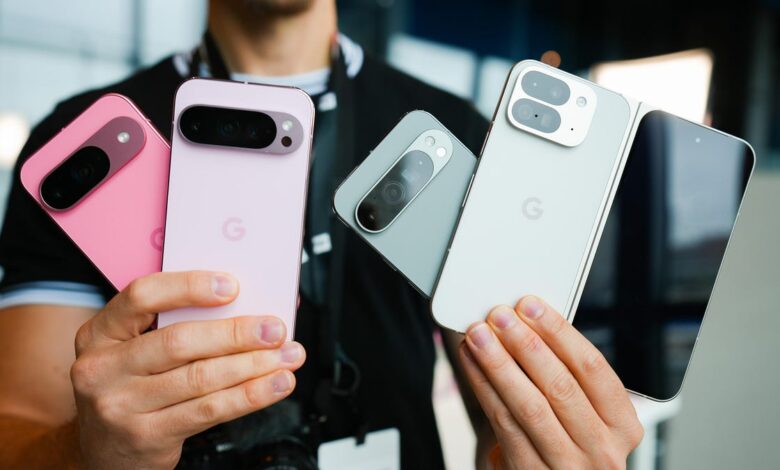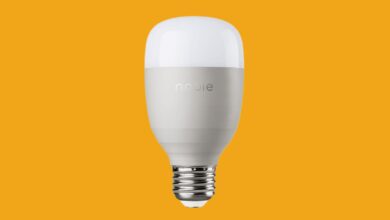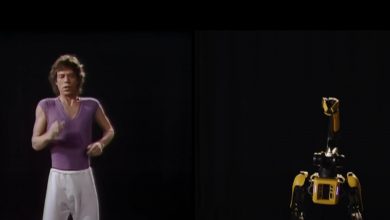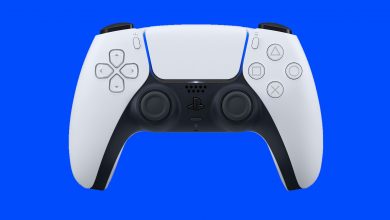The best phones to buy in 2024

If you’re shopping for a new smartphone ahead of Labor Day, you’ll quickly realize that you’ve got options aplenty — especially if you prefer Android over iOS. That’s why ZDNET’s done all the work for you. Over the past year, I’ve tested and reviewed just about every major smartphone released by Apple, Samsung, OnePlus, Google (including the latest Pixel 9 series), and others to curate this definitive list of the best handsets available right now.
What is the best phone right now?
After extensive testing of dozens of devices, our pick for the best phone overall is the Samsung Galaxy S24 Ultra, thanks to its immersive and vibrant display, reliable battery life, and wealth of special features, some of which are powered by the company’s latest generative AI model.
Of course, the best phone overall may not exactly be the best phone for you. Find the rest of our top picks below. Furthermore, for discounts on handsets ZDNET has tested and recommends, check out our best Labor Day phone deals roundup.
Best phones of 2024
Show less
Samsung Galaxy S24 Ultra
Best phone overall
Samsung’s latest Galaxy S24 line is the first to go all-in on AI, and the S24 Ultra, the most premium of the three, is the best Android phone today. The new Galaxy AI model embedded in the device brings a host of generative capabilities, including real-time phone call translations, the ability to circle an object on screen to perform an image-based Google search, AI-assisted photo editing and transcriptions, and even a Chat Assist feature for figuring out how to phrase a message in different tones.
Like its predecessor, the S23 Ultra, the S24 Ultra is built with a large 6.8-inch AMOLED display and a reliable 5,000mAh battery. Though the price has gone up to $1,299 ($100 more than the S23 Ultra), the phone’s upgrades make it well worth it: The S24 Ultra is made of a lightweight yet durable titanium frame, compared to last year’s aluminum, and features Corning’s new Gorilla Armor.
Review: Samsung Galaxy S24 Ultra
The difference in display protection means the S24 Ultra is more glare-free than ever, which ZDNET reviewer Jason Hiner suggested: “makes its screen more enjoyable to use than the iPhone 15 Pro Max and other flagship phones.” Reddit users seem to agree with Hiner, including one who said he believes “the anti-reflective glass really makes a difference.”
Under the hood, the S24 Ultra includes an upgraded Snapdragon 8 Gen 3 chipset for improved graphics and AI features, 12GB RAM (an increase from last year’s 8GB), and 2,600 nits of brightness — a big improvement over last year’s 1,750. As for the new camera system, the big upgrade comes in the form of a 50MP telephoto lens with 5x optical zoom. The results, as Hiner discovered, were sharper and less noisy images, and an overall camera system that can pull in more light than ever before.
Samsung Galaxy S24 Ultra tech specs: Processor: Qualcomm Snapdragon 8 Gen 3 | Display size: 6.8 inches | Storage options: Up to 1TB | Rear cameras: 200MP main, 12MP ultrawide, 50MP telephoto (5x), 10MP telephoto (3x) | Front camera: 12MP | Battery: 5,000mAh
Show Expert Take Show less
Show less
iPhone 15 Pro Max
Best iPhone overall
The latest iPhone 15 Pro Max offers everything a premium flagship smartphone should, including a brilliant 6.7-inch AMOLED display for all the media consumption — and mobile productivity, of course. This year’s model also looks and feels different than any prior Pro Max devices, as it’s made of titanium instead of stainless steel and, therefore, significantly lighter in the hand. This makes the iPhone 15 Pro Max noticeably more comfortable to use, as ZDNET Editor-in-Chief Jason Hiner noted in his review.
Another major feature of the iPhone 15 Pro Max is the USB-C connector; particularly, one that supports faster charging and data transfers and can charge other devices including the Apple Watch from your iPhone, directly transfer photos and videos into a portable SSD, and connect to an external 4K monitor. These benefits are game-changing for professional content creators.
Review: iPhone 15 Pro Max
The iPhone 15 Pro Max also features a new 5x zoom camera lens — the equivalent of a 120mm focal length on a mirrorless or DSLR camera. The far-distance capturing and improved low-light performance of the new camera system has been so reliable that the iPhone 15 Pro Max has become my go-to for video recording during product launch events. Lastly, a new Action button replaces the mute-switch toggle of older iPhones and lets you better customize shortcuts and easily open the apps you need, including firing up the camera with a press-and-hold.
And the A17 Pro chip rounds out the year’s upgrades, offering improved graphical performance over last year’s iPhone 14 Pro model. Multiple Best Buy customers have attested to the iPhone’s improved performance, with one citing, “No glitches have come up in the several weeks I’ve had the phone.” Given all the upgrades, Apple is charging you more for the latest iPhone 15 Pro Max, with a starting price that’s now been bumped up to $1,199. In turn, the device comes with a base storage of 256GB.
iPhone 15 Pro Max tech specs: Processor: A17 Pro | Display size: 6.7 inches | Storage options: Up to 1TB | Rear cameras: 48MP main, 12MP ultrawide, 12MP telephoto (2x), 12MP telephoto (5x) | Front camera: 12MP
Show Expert Take Show less
Show less
Google Pixel 9 Pro XL
Best camera phone
When it comes to camera performance, you really can’t go wrong with any of the flagship devices from the big three (Apple, Samsung, and Google). Depending on your preference for color temperature and feature set, you may lean towards one manufacturer over the other. But more often than not, Google’s Pixel camera system satisfies most users, and the latest Pixel 9 Pro (and Pro XL) remains a champion for instant capturing and post-processing.
Both sizes of the latest model feature a reliable triple lens setup, with a 50MP primary lens, a 48MP ultrawide, and a 48MP 5x telephoto lens for far-distance shots. They’re backed by numerous software features like Google’s Super Res Zoom (for up to 30x zoom photos), 8K video upscaling, and a new Add Me feature that lets you snap and merge two photos so everyone can be in the same shot. There’s also a new 42MP selfie camera that’s both sharper and captures a wider FOV than last year’s 10.8MP sensor. That should play well with group selfies and scenic shots.
Review: Google Pixel 9 Pro XL
Again, real-time capturing is only half the battle with mobile photography; there’s also post-processing and the flexibility of devices with editing and tweaking subjects around. In that regard, the Pixel 9 Pro, powered by a new Tensor G4 chipset, may just have the most flexible and creative photo toolbox on the market, with AI features like Magic Editor, Photo Unblur, and Best Take that can turn any bad photo into a good one.
All in all, the Pixel 9 Pro has one of the most versatile camera systems on the market, with an output that’s balanced in color and generally satisfying to look at.
Google Pixel 9 Pro and Pro XL tech specs: Processor: Google Tensor G4 | Display size: 6.3 and 6.7 inches | Storage options: 128GB/256GB/512GB/1TB | Rear cameras: 50MP main, 48MP ultrawide, 48MP telephoto | Front camera: 42MP | Battery: 4,700/5,060mAh
Show Expert Take Show less
Show less
Google Pixel 8a
Best budget phone
If bang for your buck is what you’re after, consider the Google Pixel 8a. There are really three key reasons why you should buy the latest Pixel over any other mid-range phone: For $499, you get a comfortable 6.1-inch OLED display that ramps up to a 120Hz refresh rate, a reliable 64MP camera system, and Google’s catalog of AI features like Magic Editor, Audio Eraser, and Gemini, all backed by seven years of operating system updates.
Software is the name of the game with Google Pixel phones, and the extensive support provided for the 8a series, powered by a new Tensor G3 chip, should keep it feature-relevant for as long as until 2031. For reference, most phones in this price range, including last year’s Pixel 7a, typically receive two to four years of software and security updates.
Review: Google Pixel 8a
Of course, some limitations are to be expected from a phone at this price range, such as the lack of a dedicated telephoto lens and a slower wired charging rate (18W). However, from my hands-on time with the Pixel 8a, I found it just as capable of capturing various subjects and styles, and the presence of wireless charging makes up for the phone taking a few minutes longer to fully charge than flagship handsets.
Google Pixel 8a tech specs: Processor: Google Tensor G3 | Display size: 6.1 inches | Storage options: 128GB, 256GB | Rear cameras: 64MP main, 13MP ultrawide | Front camera: 13MP | Battery: 4,492mAh
Show Expert Take Show less
Show less
OnePlus Open
Best tablet-style foldable phone
The number of foldable phones on the market has never been higher, thanks to the collective effort of just about every manufacturer, including Google with its Pixel 9 Pro Fold, Motorola with its Razr lineup, and OnePlus with the OnePlus Open. While Samsung has held the reins of the best foldable honor for years, I’m giving the top spot right now to the OnePlus Open.
Unlike its competitors, the OnePlus Open strikes the best balance of weight-to-size ratio. When folded, the phone is as light as an iPhone, and when unfolded, it expands into a thin slate of visual goodness. OnePlus leverages the 7.8-inch display by offering some of the most intuitive multitasking features I’ve tested, headlined by “Open Canvas.” With it, you can open up to three apps at once, and as you tap into each one, the other one or two will tuck itself to the side, ready to reappear when needed.
Review: OnePlus Open
The triple camera setup, while presented in a casing that sticks out more than I’d prefer, captures spectacular photos and videos, with an emphasis on blue and orangish hues that cinematographers and photography buffs know and love. By nature of the foldable form factor, the Open is also capable of taking hands-free selfies and group photos.
OnePlus got the fundamentals down pat with the Open, too, including 65W fast charging capabilities (with a charger in the box) that blow past Samsung’s Z Fold 5 and Google’s Pixel Fold standards, a base configuration of 16GB RAM and 512GB storage, and a crease-less inner display. The cherry on top for me is its $1,699 price tag. One Amazon customer even says the Open was a surprisingly smooth entryway into Android, “after going with just iPhones since the iPhone 7.”
OnePlus Open tech specs: Processor: Qualcomm Snapdragon 8 Gen 2 | Display size: 6.3 inches and 7.8 inches | Storage options: 512GB | Rear cameras: 48MP main, 48MP ultrawide, 64MP telephoto| Front camera: 32MP (outer) and 20MP (inner) | Battery: 5,000mAh
Show Expert Take Show less
Show less
Samsung Galaxy Z Flip 6
Best flip-style foldable phone
The new Galaxy Z Flip 6, unveiled at Samsung Unpacked in July, packs a ton of character and features into a tiny clamshell that pays homage to flip phones of the past.
Shape-shifting displays aside, the Z Flip 6 is very similar to the standard Samsung Galaxy S-series flagship, with a large 6.7-inch AMOLED panel that’s crisp and bright, up to 512GB of RAM for those high-resolution pictures and videos, and a healthy 4,000mAh battery powering it all — an upgrade from the Z Flip 5. There’s also now a Qualcomm Snapdragon 8 Gen 3 chipset and the first vapor cooling chamber ever on a Z Flip device, both of which should make the phone run more efficiently, reducing battery drainage. The phone is thinner and lighter than previous models, too.
Review: Samsung Galaxy Z Flip 6
The Z Flip 6’s camera system gets a nice boost, too, with an improved 50MP main sensor and 12MP ultra-wide. You’ll also find a new AI-powered Auto Zoom feature, which automatically detects how many people are in a frame, as well as potential background objects the user may want to be kept in the shot, and repositions digitally.
The Z Flip 6 also includes some fun new features for the Flex Window, or outer display of the flip phone, including interactive wallpapers, suggested replies to text messages, and a new Interpreter Mode for live translations.
Samsung Galaxy Z Flip 6 tech specs: Processor: Qualcomm Snapdragon 8 Gen 3 | Main display: 6.7 inches | Cover display: 3.4 inches | RAM/Storage: 12GB RAM with 256GB/512GB internal options | Cameras: 50MP wide angle, 12MP ultra-wide, 10MP selfie | Battery: 4,000mAh
Show Expert Take Show less
Show less
OnePlus 12
Best fast-charging phone
OnePlus has had its ups and downs over the past four years, pivoting from value-driven smartphones to ultra-premium and then back to square one with last year’s OnePlus 11. This year, it’s doubling down on its value-driven flagships.
The OnePlus 12 starts at $899, which undercuts its closest competitors, the $999 Samsung Galaxy S24 Plus and Google Pixel 9 Pro, and here’s everything you get for the price: a large 6.8-inch AMOLED 120Hz display, a 5,400mAh battery, a triple camera setup with a competent 50MP main lens at the helm, the latest Snapdragon 8 Gen 3 processor, and more. Again: $899, and that’s before the $100 discount when you trade in any phone in any condition to OnePlus. Take advantage of that.
Review: OnePlus 12
Putting the value aspect aside, the OnePlus 12 shines with its charging speed, something you’ll quickly take for granted once you realize that phones don’t have to be sitting by an outlet for two hours every day. The 80W wired charging on the phone can power it from 0 to 50% within 10 minutes. A full charge takes less than 30 minutes. “80W fast charging is life-changing,” a satisfied Best Buy customer adds.
Just as impressive is the OnePlus 12’s new 50W wireless charging, a feature many users have been asking for and was sorely missed on last year’s model. While the OnePlus 12 is not as “all in” on generative AI features, it offers a well-rounded, high-performing Android experience for a couple of hundred dollars less than other flagship phones.
OnePlus 12 tech specs: Processor: Qualcomm Snapdragon 8 Gen 3 | Display size: 6.8 inches | Storage options: Up to 512GB | Rear cameras: 50MP main, 48MP ultrawide, 64MP telephoto | Front camera: 16MP | Battery: 5,000mAh
Show Expert Take Show less
Our pick for the best phone overall is the Samsung Galaxy S24 Ultra. It features everything you could want from a smartphone, including a large display, four cameras that can shoot 200MP photos and 8K video, up to 1TB of storage, a built-in S Pen for writing and drawing, and a 5,000mAh battery powering the system. Here’s how the S24 Ultra fares with the rest of our top picks.
|
Best phone model |
Price |
Storage |
Screen size |
Battery size |
Processor |
|
Samsung Galaxy S24 Ultra |
$1,299 |
Up to 1TB |
6.8 inches |
5,000mAh |
Qualcomm Snapdragon 8 Gen 3 |
|
iPhone 15 Pro Max |
$1,099 |
Up to 1TB |
6.7 inches |
4,323mAh |
A17 Bionic |
|
Google Pixel 9 Pro XL |
$1,099 |
Up to 1TB |
6.7 inches |
5,060mAh |
Google Tensor G4 |
|
OnePlus Open |
$1,699 |
512GB |
6.3 inches and 7.8 inches |
5,000mAh |
Qualcomm Snapdragon 8 Gen 2 |
|
Samsung Galaxy Z Flip 6 |
$1,099 |
Up to 512GB |
6.7 inches |
4,000mAh |
Qualcomm Snapdragon 8 Gen 3 |
|
Google Pixel 8a |
$499 |
Up to 256GB |
6.1 inches |
4,492mAh |
Google Tensor G3 |
|
OnePlus 12 |
$799 |
Up to 512GB |
6.8 inches |
5,400mAh |
Qualcomm Snapdragon 8 Gen 3 |
Choosing a phone can be daunting. But having a list of your must-have features can go a long way toward narrowing down your options. If you’re a mobile professional or travel a lot for work, you’ll want to choose a phone that can provide you with at least a full day of use on a full battery and both LTE and Wi-Fi connectivity.
If you’re looking for your teen’s first smartphone, a budget-friendly and less feature-heavy option may be better to prevent overspending and misuse. And if you’re a content creator or other creative professional, you’ll want a phone with an excellent front and rear camera to capture photos and videos for your social media feed.
|
Choose this best phone… |
If you want… |
|
Samsung Galaxy S24 Ultra |
A no-compromise smartphone that virtually any type of user can take advantage of. It’s the only 2024 smartphone with a built-in stylus. |
|
iPhone 15 Pro Max |
The best iPhone money can buy. It has a large screen, the longest-lasting battery out of all the models, and a toolbox of a camera system. |
|
Google Pixel 9 Pro XL |
A flagship camera experience at your fingertips. The Pixel 9 Pro XL differentiates itself with a slew of AI-powered and the best selfie camera on the market. |
|
OnePlus Open |
The best phone-to-tablet foldable that money can buy. And if you’re a power user, the multitasking and charging features especially will serve you well. |
|
Samsung Galaxy Z Flip 6 |
A flip-style foldable that’s both compact and performant. With a large 3.4-inch external display and improved battery life, this is the foldable to buy for most people. |
|
Google Pixel 8a |
A more budget-friendly smartphone that doesn’t compromise on performance and camera quality. The Pixel 8a will also receive seven years of OS updates, keeping it feature-relevant until at least 2031. |
|
OnePlus 12 |
A phone that lasts long and charges from 0% to 100% in just 30 minutes. The OnePlus 12 is quietly good value, too, starting at $799. |
The process of making our phone selections includes real-world testing and researching about the phones for weeks, consulting with colleagues, industry experts, and analysts who also have hands-on experience with the smartphones, and then selecting the best from all of the available choices.
Ultimately, we weigh in the following aspects when curating this list:
- Design: There’s only so much you can do with a slab design, but size differences, material choices, color options, and even the ability to bend a screen in half give shoppers enough diversity to have a preference. That’s why we have a recommendation for every form factor.
- Performance: For many, smartphones are the center of our lives, which means the best ones are performant and can handle most, if not all, tasks you throw at them.
- Camera: Arguably the most valuable feature of a smartphone; the consistency and reliability of a camera system can make or break the overall mobile experience. We test every device in broad daylight and in the darkest of nights when finalizing this list.
- Battery: Every option in this guide should last you at least a day of moderate use. We also consider what devices support fast charging and/or wireless charging.
- Value: Price points are noted, but the most important thing with buying a phone is getting your money’s worth. With these picks, you can rest assured that you’re getting the best bang for your buck.
ZDNET’s review team spends upwards of a year testing the ins and outs of every major phone release, evaluating the day-to-day performance, camera quality, battery life and endurance, and special features. Here’s a breakdown of every factor we consider before we make recommendations:
- Design and ergonomics: How good a phone looks and feels plays a big role in many users’ buying journeys, so we consider these aspects heavily when testing.
- Performance: Several factors affect a phone’s performance, including LTE/5G signal, battery life, and background tasks. Therefore, we typically begin our evaluations with a fully charged handset, with all background tasks closed, and with as stable of a mobile connection as possible.
- Camera quality: ZDNET tests phone cameras by capturing hundreds of photos and videos of various subjects and in various lighting conditions. We also compare the output to that of older models.
- Battery life and charging: It’s also important for us to evaluate how long phones last under light, moderate, and heavy usage, how long they take to recharge, and how they do it (wired, wireless, or both).
- Special features: These features distinguish tested devices from a bustling smartphone market and hopefully bring added value to users, not the opposite.
- Pricing and availability: Beyond budget considerations, we also note if a phone is available in the US or only internationally.
For a more extensive breakdown, check out our comprehensive phone testing methodology page.
As mentioned above, the best phone right now is the Samsung Galaxy S24 Ultra, which features just about everything you could want in a mobile computing device. From the large and vibrant display to the generative AI features to the quad-camera setup, there’s no device on the market that checks more boxes than Samsung’s latest Ultra flagship.
The best phone for AI right now is the Samsung Galaxy S24 Ultra, which supports the company’s latest Galaxy AI features, including Circle to Search, Generative Edit, Live Translate, and Chat Assist.
Google and, just recently, Apple have also begun rolling out AI features across new and older handsets. While distinctively branded, Pixels, Galaxy phones, and, soon, iPhones offer a similar list of AI capabilities, including photo editing, text summaries, and voice assistants that can process natural language.
Besides the ones listed above, the OnePlus 12R is another great pick for the money. At $499, the device features a large 6.7-inch display with 120Hz refresh rate, a 50MP main camera system, a 5,500mAh battery that beats that of higher-cost devices, and 80W wired charging. The real kicker is OnePlus’ aggressive trade-in offer, with the company discounting $100 when you turn in any phone in any condition, effectively bringing the 12R’s price down to $399.
It’s debatable between the iPhone 15 Pro Max, Google Pixel 9 Pro, and Samsung Galaxy S24 Ultra. For long-distance shots, Samsung’s 200MP rear camera with 100x Space Zoom can capture subjects as far out as the moon. Google’s Pixel phones have always been at the top for point-and-shoot pictures and a rather simplified (but effective) camera experience. If you’re a videographer at heart, then the iPhone 15 Pro Max, with Cinematic mode and Action mode, makes for an excellent tool to get the shots you need.
The average phone battery gives you about 22 hours of use on a full charge, which is great for staying connected on your commutes, work flights, and at home in the evenings. But that’s just the average, actual use time varies by phone model and by what you’re using your phone for.
For example, the latest iPhone 15 Pro Max boasts a 29-hour battery life. But you’ll most certainly get less than that if you habitually scroll through social media or stream video and music.
Most smartphones have a base storage capacity of 128GB, which is plenty of space for average users to download apps and music, take photos, and shoot videos. However, if you’re a mobile or creative professional, you’ll need more space. Many smartphones have expanded storage options up to 512GB or even 1TB, and you can always sync your phone to your preferred cloud storage service to free up local storage space.
Whether you’re looking to upgrade or get your first smartphone, Apple, Samsung, and OnePlus have great choices that ZDNET’s tested and recommends.




